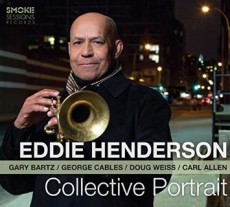
Daily Dose Of Jazz…
Eddie Henderson was born on October 26, 1940 in New York City. His mother was an original Cotton Club dancer and his father sang with a popular singing group of the day, Billy Williams and The Charioteers. At the age of nine he got an informal lesson by Louis Armstrong and continued his study of the instrument as a teenager at the San Francisco Conservatory of Music, after his family moved there in 1954. As a young man, he performed with the San Francisco Conservatory Symphony Orchestra. In 1957 he met Miles Davis, a friend of his parents and played a gig together when he was just 17.
After three years in the Air Force, Henderson enrolled at the University of California, Berkeley graduating with a B.S. in zoology in 1964. He then studied medicine at Howard University, then went back to the Bay area undertook his residency in psychiatry in 1968, he practiced general medicine from 1975 to 1985 in San Francisco part-time for about four hours a day working at a small clinic.
His break in music came when he took a weeklong gig with Herbie Hancock’s Mwandishi band that led to a three-year job. It was during this period in the early 70s that her recorded three albums with the group but more importantly came out as a leader and recorded his debut album Realization followed by Inside Out.
After leaving Hancock, Eddie worked extensively with Pharoah Sanders, Mike Nock, Norman Connors, and Art Blakey’s Jazz Messengers. He joined Latin jazz band Azteca, recorded with Charles Earland and fronted his own bands, both jazz and rock-oriented. However, recognized for his work with Hancock, his own records were considered too commercial.
By the 1990s, Henderson returned to playing acoustic hard bop, touring with Billy Harper while also working as a physician. He recorded at Miles tribute album So What? with Bob Berg, Dave Kikoski, Ed Howard and Victor Lewis. He has collaborated with his wife Natsuko who composed Tender You, Precious Moment, Around the World in 3/4 and Be Cool.
As an educator trumpet and flugelhorn player Eddie Henderson has been a faculty member of Juilliard since 2007 and is Associate Professor of Trumpet at the Oberlin Conservatory Jazz Department, beginning in 2014. He has recorded 23 albums as a leader, has released two anthologies, and recorded nearly four-dozen sessions as a sideman with Benny Golson, Mulgrew Miller, Richard Davis, Gary Bartz, Leon Thomas, Billy Hart, McCoy Tyner, Mal Waldron, Stanley Cowell, Grover Washington, Jr., Kenny Barron, Joe Farnsworth and the Mingus Big Band to name a few.
More Posts: flugelhorn,trumpet
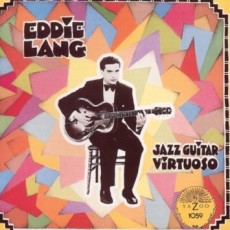
Daily Dose Of Jazz…
Eddie Lang was born Salvatore Massaro on October 25, 1902 in Philadelphia, Pennsylvania. He first took violin lessons for 11 years and while in school he became friends with Joe Venuti, with whom he would work for much of his career. By the time he was 16 he was playing violin, banjo and guitar professionally. He worked with various bands in the Northeast United States, worked in London between late 1924 to early 1925, and then settled in New York City.
By 1927 Lang was being featured along with cornetist Bix Beiderbecke on the recording of Singin’ the Blues by Frankie Trumbauer and His Orchestra. Between the two trading licks and soloing this session became a landmark jazz recording of the decade. 1929 saw him joining Paul Whiteman’s Orchestra and performing in the movie King of Jazz. The following year he played guitar on the original recording of the jazz and pop standard Georgia On My Mind recording with Hoagy Carmichael and His Orchestra with Joe Venuti and Bix Beiderbecke.
Eddie would leave Whiteman’s band with Bing Crosby and as his accompanist was back in the movies with Big Broadcast. Switching gears to play blues he recorded under the pseudonym Blind Willie Dunn on a number of blues records with Lonnie Johnson. Over the course of his short career he composed some three-dozen songs and recorded with the bands of Joe Venuti, Frank Signorelli, Adrian Rollini, Roger Wolfe Kahn, Jean Goldkette, in addition to doing a large amount of freelance radio and recording work.
Guitarist Eddie Lang, who was one of the three major innovators of jazz guitar and who influenced future guitarists, such as Django Reinhardt, passed away following a tonsillectomy in New York City on March 26, 1933 at the age of thirty. He had been urged by Crosby to have the tonsillectomy so that he might have speaking parts in Crosby’s films. His voice was chronically hoarse, and it was hoped that the operation would remedy this.
His recording of Singin’ The Blues with Frankie Trumbauer and His Orchestra was inducted into the Grammy Hall of Fame and has been placed on the U.S. Library of Congress National Recording Registry. He has been inducted into the Big Band and Jazz Hall of Fame, is one of the ASCAP Jazz Wall of Fame inductees.
More Posts: guitar
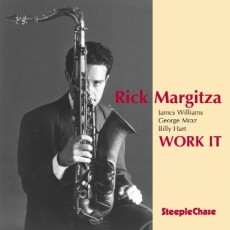
Daily Dose Of Jazz…
Rick Margitza was born in Dearborn, Michigan on October 24, 1961. His paternal grandfather, a Hungarian Gypsy violinist taught him to play the violin at the age of four. Following this he played piano and oboe, and settled on tenor saxophone while at Fordson High School.
After attending several colleges, Wayne State University, Berklee College of Music, University of Miamiand Loyola University in New Orleans, Rick toured with Maynard Ferguson and Flora Purim in the 1980s. A move to New York City presented him the opportunity to playwith Miles Davis.
Between 1989 and 1991, Margitza released three sessions for Blue Note Records, his debut being Color followed by Hope and This Is New. He has recorded copiously for EMI, Challenge, Steeplechase, Palmetto, snd Nocturne Jazz record labels as well as a sideman with Eddie Gomez, Tony Williams, Bobby Hutcherson, Maria Schneider, McCoy Tyner, Chick Corea, Stanley Cowell, Steve Masakowski, Andy Laverne, .
In 2003 Rick Margitza moved to Paris and has performed with Martial Solal, Francois Moutin, ri Hoenig, Franck Amsallem, Jean-Michel Pilc and Manuel Rocheman. He composed a saxophone concerto and two symphonies for orchestra and the tenor saxophonist continues to perform, compose and record.
More Posts: saxophone
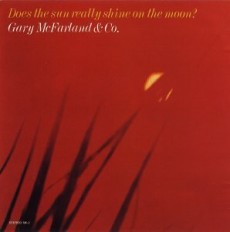
Daily Dose Of Jazz…
Gary McFarland was born in Los Angeles, California on October 23, 1933. An influential composer, arranger, vibraphonist and vocalist, he made a name for himself on Verve and Impulse Records during the Sixties, making one of the more significant contributors to orchestral jazz. He attained a small following after working with Bill Evans, Gerry Mulligan, Johnny Hodges, John Lewis, Stan Getz, Bob Brookmeyer and Anita O’Day.
His debut as a leader came in 1961 with the Jazz Version of How To Succeed In Business Without Really Trying. Gary recorded for Skye, Buddah and Cobblestone Records through the 1960s into the early Seventies. As well as eighteen of his own albums as a leader and arrangements for other musicians such as Lena Horne, Steve Kuhn, Gabor Szabo, John Lewis, Shirley Scott, Zoot Sims and Gary Burton, he composed the scores to the films Eye of the Devil in 1968 and Who Killed Mary What’s ‘Er Name in 1971.
By the end of the 1960s McFarland was moving away from jazz towards an often wistful or melancholy style of instrumental pop, as well as producing the recordings of other artists on his Skye Records label, run in partnership with Szabo and Cal Tjader until its bankruptcy in 1970.
Gary McFarland and Louis Savary wrote the classic song Sack Full Of Dreams that was first released by Grady Tate in 1968. He was considering a move into writing and arranging for film and stage when on November 3, 1971 he was poisoned with methadone in a New York City bar at the tender age of 38. In tribute Bill Evans performed Gary’s Waltz in 1979, shortly before his own death.
More Posts: arranger,composer,vibraphone,vocal
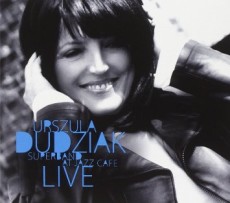
Daily Dose Of Jazz…
Urszula Bogumiła Dudziak was born October 22, 1943 in the Straconka neighborhood of Bielsko-Biata, Poland. She studied piano but began to sing in the late 50s after hearing records by Ella Fitzgerald. Within a few years she was one of the most popular jazz artists in her native country.
With her marriage to Michael Urbaniak in the late 60s they began to tour overseas and in the 70s settled in New York. Dudziak has some problems with language and customarily eschews words in favor of wordless vocalizing that is far more adventurous than scat. Already gifted with a remarkable five-octave vocal range, she employs electronic devices to extend still further the possibilities of her voice.
She has frequently worked with leading contemporary musicians, including Archie Shepp, Lester Bowie, Jay Clayton, Jeanne Lee, Bobby McFerrin, Norma Winstone, Sting, Michelle Hendricks, Michael Urbaniak, Krzysztof KomedaLaura Newton, Gil Evans and collaborated with fellow Polish jazz vocalist Grazyna Auguscik.
Vocalist Urszula Dudziak has been awarded the Knight’s Cross of the Order of Polonia Restituta by President Leon Kaczynski, published her autobiography Wyspiewam Wam Wszystko, translated means I’ll Sing Everything For You and she has recorded twenty-two albums and appeared in thirteen films. She continues to perform and tour.
More Posts: vocal


